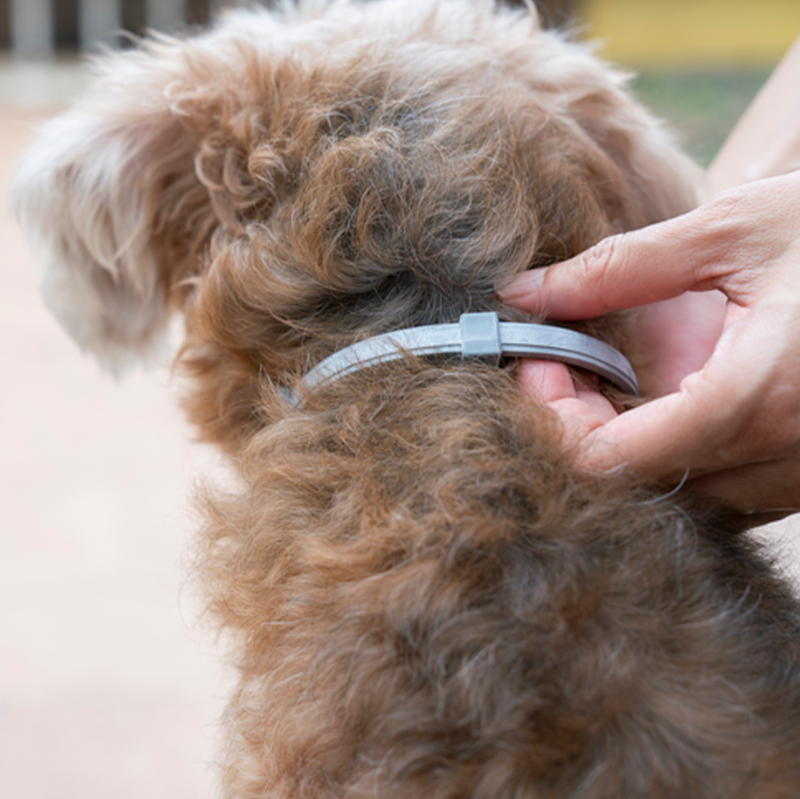Signs Your Cat Has Fleas
Written by GCP
Updated March 25th, 2021 | 8 Minute Read
So, you think your cat might have fleas. Maybe your pet is a calm cuddler who happily lets you explore their coat, or maybe you have a wild one who’s quick to get the claws out. In either case: You need to know, because those little parasites spread quickly and don’t just go away on their own. Here are the most efficient ways to search your cat for fleas — and what to do if you find them.
HOW TO LOOK FOR FLEAS
Look for Flea Dirt:
Fleas are tiny — even adult fleas — and not easy to spot. What is easy to spot on your cat is politely called “flea dirt” (you guessed it: poo). This dirt is dark brown in color, and made up of digested blood that fleas have sucked from your cat. If you’re not sure that what you’re seeing is flea dirt, put some onto a damp tissue; wet flea dirt will dissolve, leaving a reddish-brown stain. If flea dirt is present, then so are fleas — even if you can’t see them.
Use a Flea Comb:
It’s possible to use your fingers to search your cat for fleas and flea dirt but, because a cat’s coat can be dense and hard to sift through (especially when the patient’s wiggly), it’s much easier to use a flea comb. This specialized, fine-toothed comb rakes out flea dirt from the fur, and may also grab some of the adult fleas (watch closely, because they’ll quickly jump away). Keep a bowl of soapy water on hand so that you can drown the fleas you catch.
Even with the right comb, fleas can still be hard to find. Not only are they quick — they’re also tiny (and their eggs are even tinier). When you’re on the hunt, head straight for their favorite hideouts…
WHERE TO LOOK
Back and Tail, Sides, and Neck:
Generally, fleas make themselves at home in the warm, protected places on your cat’s coat. First, comb the back area — especially where the tail joins the body — which is a hot spot for fleas. Next, whether you find flea dirt in the back or not, comb the sides of the body and the underside of the neck.
Belly, Armpits, and Groin:
The hardest-to-reach areas on your kitty are also some of the warmest. That makes them enticing for fleas, so pay special attention. Start at the belly and work your way outwards, keeping a close eye out for any adult fleas, eggs, or bites. Beware of any sensitive areas on your cat, and go slow and steady!
Neck:
Check all around your cat’s neck (not just the underside). Be sure to check the face, too! Fleas love to hide out around the ears and cheeks.
Your best bet for detection is also your best bet for prevention: Comb your cat regularly (and keep that bowl of soapy water on hand). If you find some fleas making a meal out of your cat, don’t worry: We’ve got you covered for the next steps…
MY CAT HAS FLEAS! WHAT DO I DO?
Don’t be hard on yourself if you find fleas on your poor little kitty. It isn’t always obvious — though there are behavioral and physical indicators that you can watch out for. One of the most obvious signs of a flea problem is if your cat is itching frantically. You should also watch for lethargy and check for pale gums: signs of not just fleas but possibly flea-related anemia (significantly lowered count of red blood cells, which can lead to organ or brain damage). Finally, look for agitation and other changes in behavior: These are expected and, when you think about it, understandable. If you were being bit constantly by tiny bugs, how would you react?
How to treat your cat:
Once a flea infestation is confirmed, there are tons of treatment options — but be aware that some can be a bit dangerous. Collars and sprays are super-effective...because they’re usually loaded with pesticides and chemicals, which means they should always be used as a last resort. The good news is that there are plenty of safe methods available. Using a fine-toothed flea comb on your cat’s coat several times a day is a great way to skim off fleas and their eggs. You can apply a lemon spray to your cat’s coat a few times daily (fleas can’t handle the citric acid) — and you can make that spray yourself by simply cutting and boiling a lemon, then letting it steep for a few hours. Adding apple cider vinegar and brewer’s yeast to your cat’s diet has an effect similar to the lemon strategy.
How to treat your home:
Unfortunately, if your cat has fleas, your house probably does, too. Again, there are a number of effective chemical solutions on the market, including bug bombs, sprays, and fumigation. But, again, these are dangerous — and some of them might require you to shack up somewhere else for a night or two.
One chemical-free solution is food-grade diatomaceous earth (don’t let the name throw you: it’s basically a powder): Spread this silica-heavy dust around your house; it leaves fleas vulnerable to dehydration. Instead of going straight to the big guns, though: Vacuum your house, thoroughly, and do a deep clean of places fleas like to hide such as carpets, bedding, and upholstery — and don’t forget your cat’s bed and favorite throw pillow. There’s a real advantage to steam cleaning (it’s the heat!), so it’s worth renting a machine for a day.
Bear in mind: Depending on the severity of your infestation, you might have to do this whole routine a few times a week.
Maybe it’s not fleas?
Your cat might be itching and irritated but you should never immediately assume it’s because of fleas. Always conduct a thorough check for hard evidence before resorting to anti-flea measures. Allergies are a leading cause of itchiness in cats, and there are a number of other reasons your cat might be scratching away: fur mites, illness, and even stress can lead to excessive grooming.
SUMMARY
Fleas are a fact of life for cat owners, but they don’t have to be a constant problem. Checking your pet for fleas is half the battle, and the other half is knowing what to do if you find them. Prevention is always the best strategy and, fortunately, there are many safe options to keep fleas out of your house and off of your cat.
Detection and action are the next level, and there’s no fast-and-easy way to get rid of a flea infestation. Medications, flea collars, and sprays all come with a degree of risk, but there are also some totally safe (and delicious!) cat chew treats containing ingredients that keep the fleas at bay. When in doubt, ask your vet for advice. In any case, prepare yourself for a bunch of vacuuming and laundry — and the relief in knowing that you’ve made sure that your cat is healthy, hearty, and happy.













